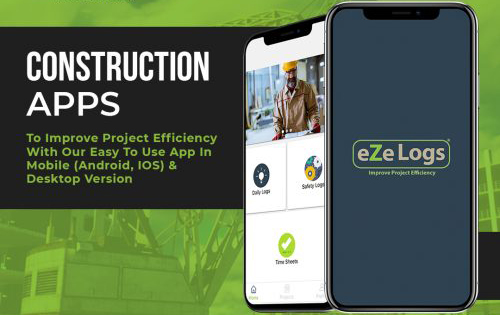Online project planning is a game-changer for the construction industry. It is a revolutionary way of managing projects that has revolutionized the way construction projects are planned, managed, and executed. Online project planning has enabled construction companies to streamline their processes, reduce costs, and increase efficiency.

It has also enabled them to better manage their resources, track progress, and ensure that projects are completed on time and within budget. With online project planning, construction companies can now easily collaborate with their teams, clients, and other stakeholders to ensure that projects are completed successfully. This has resulted in improved customer satisfaction, increased productivity, and improved profitability.
The Challenges of Traditional Project Planning in Construction
Traditional project planning in construction can be a challenging process. It requires a great deal of coordination between multiple stakeholders, including the owner, the contractor, the architect, and the subcontractors. It also requires a thorough understanding of the project scope, timeline, and budget.
The first challenge is to ensure that all stakeholders are on the same page. This means that everyone needs to be aware of the project scope, timeline, and budget. It also means that everyone needs to be in agreement on the project goals and objectives. This can be difficult to achieve, as each stakeholder may have different ideas about the project.
The second challenge is to ensure that the project is completed on time and within budget. This requires careful planning and coordination between all stakeholders. It also requires a thorough understanding of the project scope and timeline. If any of these elements are not properly managed, the project could be delayed or over budget.
The third challenge is to ensure that the project meets all safety and quality standards. This requires a thorough understanding of the relevant regulations and codes. It also requires a commitment to safety and quality from all stakeholders.
Finally, the fourth challenge is to ensure that the project is completed to the satisfaction of all stakeholders. This requires a commitment to communication and collaboration between all stakeholders. It also requires a commitment to resolving any disputes that may arise during the project.
Overall, traditional project planning in construction can be a challenging process. It requires a great deal of coordination between multiple stakeholders, a thorough understanding of the project scope, timeline, and budget, and a commitment to safety and quality. With careful planning and collaboration, however, these challenges can be overcome and the project can be completed successfully.
The Benefits of Online Project Planning in Construction
Project planning is an essential part of any construction project. It helps to ensure that the project is completed on time, within budget, and to the highest quality standards. Online project planning tools can make this process easier and more efficient.
Online project planning tools provide a range of benefits for construction projects. They allow project managers to easily track progress, assign tasks, and monitor budgets. They also provide a centralized platform for communication between team members, allowing for better collaboration and coordination.
Online project planning tools also provide a range of features that can help to improve the efficiency of the project. For example, they can provide automated reminders for tasks and deadlines, as well as automated reports that can help to identify potential problems before they become major issues. This can help to reduce the amount of time spent on manual tasks, freeing up resources for more important tasks.

Finally, online project planning tools can help to improve the accuracy of project estimates. By providing detailed information about the project, such as materials, labor, and equipment costs, they can help to ensure that the project is completed within budget. This can help to reduce the risk of cost overruns and ensure that the project is completed on time.
Overall, online project planning tools can provide a range of benefits for construction projects. They can help to improve efficiency, accuracy, and collaboration, while also reducing the risk of cost overruns. By taking advantage of these tools, construction projects can be completed more quickly and efficiently.
Case Studies of Successful Online Project Planning in Construction
Case Study 1: The Construction of the San Francisco-Oakland Bay Bridge
The San Francisco-Oakland Bay Bridge is one of the most iconic bridges in the United States. Constructed in the 1930s, the bridge is a marvel of engineering and construction. The project was completed on time and within budget, thanks in part to the use of online project planning.
The project team used a web-based project management system to coordinate the various aspects of the project. This system allowed the team to track progress, assign tasks, and communicate with each other in real-time. The system also allowed the team to access project documents, such as plans and drawings, from any location.
The project team also used a cloud-based document management system to store and share documents. This system allowed the team to access documents from any location, and to collaborate on documents in real-time.
The project team also used a web-based scheduling system to track progress and ensure that tasks were completed on time. This system allowed the team to assign tasks to specific individuals, and to track progress in real-time.
The project team also used a web-based budgeting system to track costs and ensure that the project stayed within budget. This system allowed the team to track costs in real-time, and to make adjustments as needed.
The use of online project planning allowed the project team to complete the San Francisco-Oakland Bay Bridge on time and within budget. The project was a success, and the bridge is still in use today.
Case Study 2: The Construction of the Hoover Dam
The Hoover Dam is one of the most iconic structures in the United States. Constructed in the 1930s, the dam is a marvel of engineering and construction. The project was completed on time and within budget, thanks in part to the use of online project planning.
The project team used a web-based project management system to coordinate the various aspects of the project. This system allowed the team to track progress, assign tasks, and communicate with each other in real-time. The system also allowed the team to access project documents, such as plans and drawings, from any location.
The project team also used a cloud-based document management system to store and share documents. This system allowed the team to access documents from any location, and to collaborate on documents in real-time.
The project team also used a web-based scheduling system to track progress and ensure that tasks were completed on time. This system allowed the team to assign tasks to specific individuals, and to track progress in real-time.
The project team also used a web-based budgeting system to track costs and ensure that the project stayed within budget. This system allowed the team to track costs in real-time, and to make adjustments as needed.
The use of online project planning allowed the project team to complete the Hoover Dam on time and within budget. The project was a success, and the dam is still in use today.
Best Practices for Implementing Online Project Planning in Construction
1. Establish Clear Goals and Objectives: Before beginning any online project planning, it is important to establish clear goals and objectives. This will help ensure that the project is completed on time and within budget.
2. Create a Detailed Project Plan: Once the goals and objectives have been established, it is important to create a detailed project plan. This plan should include a timeline, budget, and list of tasks that need to be completed.
3. Utilize Online Project Management Tools: There are many online project management tools available that can help streamline the project planning process. These tools can help keep track of tasks, deadlines, and budgets.
4. Communicate Regularly: Regular communication is key to successful online project planning. It is important to keep all stakeholders informed of progress and any changes that may occur.
5. Monitor Progress: It is important to monitor progress throughout the project to ensure that it is on track. This can be done by setting up regular check-ins with stakeholders and tracking progress in the project management tools.
6. Document Everything: It is important to document all aspects of the project, including decisions, changes, and progress. This will help ensure that the project is completed on time and within budget.
7. Celebrate Success: Once the project is complete, it is important to celebrate the success. This will help motivate the team and ensure that everyone is proud of their accomplishments.
Future of Online Project Planning in Construction
The future of online project planning in construction is bright. With the advent of new technologies, such as cloud computing, artificial intelligence, and the Internet of Things, the construction industry is poised to benefit from the increased efficiency and accuracy that online project planning can provide.
Cloud computing allows for the storage and sharing of project data across multiple devices, allowing for real-time collaboration and communication between project stakeholders. This can help to reduce the time and cost associated with project planning, as well as improve the accuracy of the plans.

Artificial intelligence can be used to automate certain aspects of project planning, such as scheduling and resource allocation. This can help to reduce the amount of time and effort required to plan a project, as well as improve the accuracy of the plans.
The Internet of Things can be used to monitor the progress of a project in real-time, allowing for more accurate tracking of progress and the ability to make adjustments as needed. This can help to reduce the amount of time and effort required to manage a project, as well as improve the accuracy of the plans.
Overall, the future of online project planning in construction is very promising. With the help of new technologies, the construction industry can benefit from increased efficiency and accuracy in project planning. This can help to reduce the time and cost associated with project planning, as well as improve the accuracy of the plans.
Final Thoughts
In conclusion, online project planning is a game-changer for the construction industry. It provides a more efficient and cost-effective way to manage projects, allowing for better communication, collaboration, and organization. It also helps to reduce the risk of errors and delays, and can help to improve the overall quality of the project. With the help of online project planning, the construction industry can become more efficient and successful.


